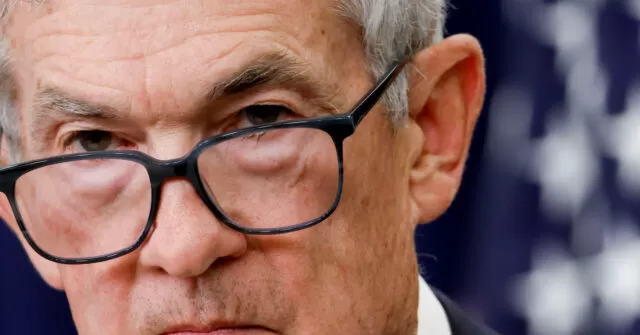The Federal Reserve’s decision to cut interest rates by one hundred basis points at the end of last year has sparked concerns about the possibility of a surge in inflation. This move, which was meant to stimulate the economy and boost consumer spending, has now caused a ripple effect in the market, with inflation expectations on the rise and consumer sentiment taking a hit. This has also raised doubts about the effectiveness of the Fed’s policies and their ability to keep inflation under control.
The decision to cut interest rates was a proactive measure taken by the Fed to counter the slowing economy and mitigate the impact of the ongoing trade war with China. However, the unintended consequence of this move has been a sharp increase in inflation expectations. As interest rates go down, borrowing becomes cheaper and consumers tend to spend more, causing a rise in demand for goods and services. This surge in demand can lead to an increase in prices, which in turn, can trigger inflation.
According to recent data, inflation expectations have risen to their highest level in more than a year, with consumers anticipating a 3.2% increase in prices over the next 12 months. This is a significant jump from the 2.7% expectation reported in December 2019. This rise in inflation expectations has been fueled by the Fed’s decision to cut rates, as well as other factors such as rising oil prices and a tight labor market.
The increase in inflation expectations has also had a negative impact on consumer sentiment. The University of Michigan’s consumer sentiment index, which measures how consumers feel about the economy, dropped to its lowest level in four months in January. This decline can be attributed to fears of rising prices and the potential impact it could have on their purchasing power.
The rise in inflation expectations and the subsequent drop in consumer sentiment have raised doubts about the Fed’s ability to control inflation. Many experts believe that the Fed may have acted too hastily in cutting interest rates, and that this move could lead to an uncontrollable surge in prices. This has also sparked a debate about whether the Fed should focus more on controlling inflation or on stimulating the economy.
However, it is important to note that the Fed’s actions are not solely responsible for the increase in inflation expectations. The ongoing trade war with China and the recent tensions in the Middle East have also played a role in pushing up oil prices, which in turn, has contributed to the rise in inflation expectations. Furthermore, the Fed has maintained that their decision to cut rates was based on economic data and not just to appease the markets.
Despite the concerns surrounding inflation, there are still many positive signs in the economy. The unemployment rate remains at a historic low and wages have been steadily increasing, giving consumers more spending power. Additionally, the stock market has been performing well, with all three major indexes hitting record highs in January. This indicates that investors are confident in the economy and are not overly concerned about inflation.
Moreover, the Fed has assured that they will closely monitor the situation and make necessary adjustments to their policies if needed. They have also stated that they have the tools and the experience to control inflation, should it start to rise at an uncontrollable rate. This should provide some reassurance to consumers and investors alike.
In conclusion, while the Fed’s decision to cut interest rates may have sparked fears of inflation, it is important to remember that there are many factors at play in the economy. The rise in inflation expectations and the drop in consumer sentiment are concerning, but they are not definitive indicators of what the future holds. The Fed’s actions should be seen as a proactive measure to boost the economy, and not as a sign of impending inflation. As always, we must trust in the Fed’s expertise and their ability to navigate through any challenges that may arise.

